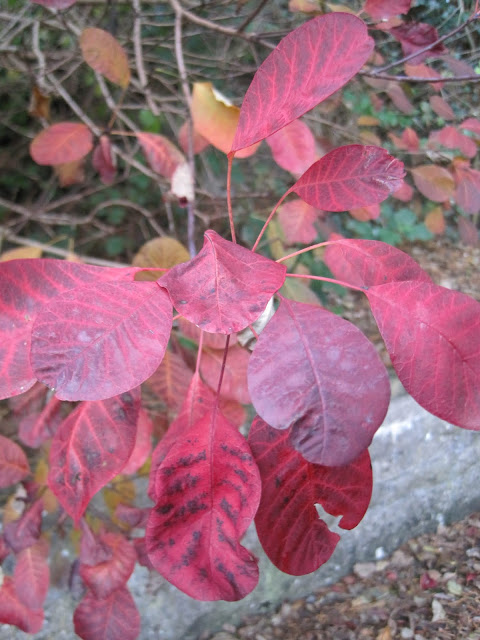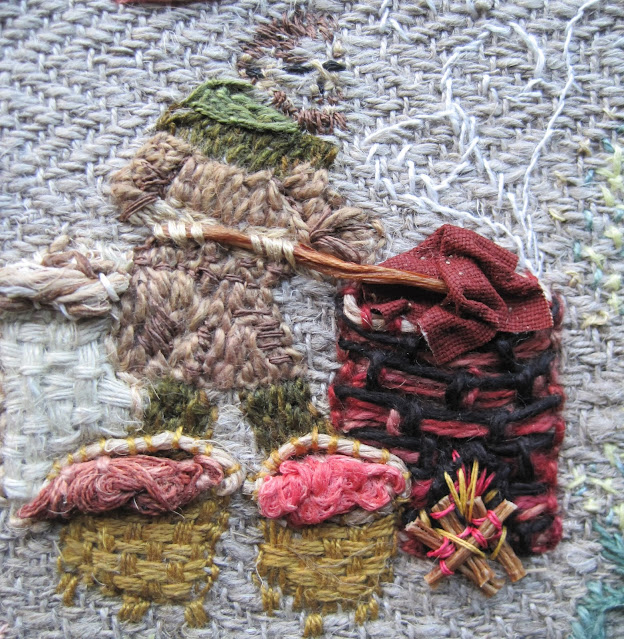Saturday, 14 November 2020
Red Leaves
Sunday, 8 November 2020
Medieval Linen Embroidery
Last year the Heron Corn Mill, Beetham provided seeds for people to grow flax as part of a Heritage programme exploring the flax industry in Cumbria from the Middle Ages.
 |
| Flax plant |
 |
| Retting of flax |
The flax was then cut and the fibre extracted. It was woven into a narrow cloth which you can see below on the embroidery frame.
You can also see the linen threads which were dyed with plant based dyes.The Corn Mill put out a request for embroiderers to reproduce the plants used for dyeing and I volunteered to embroider Madder.
I designed my madder plant set within a loose frame with a medieval dyer at work. Part of the frame was a range of sample colours obtained from madder varying from pale colours to pinky-reds.
The dye is obtained from the root so I made sure that was given prominence.
The dyer was embroidered working with Madder.
As another part of the frame I stitched some of the Medieval beasts using a range of plant dyed threads.
The name madder was also stitched
Below is the finished panel.
The dye is obtained from the root so I made sure that was given prominence.
The dyer was embroidered working with Madder.
As another part of the frame I stitched some of the Medieval beasts using a range of plant dyed threads.
The name madder was also stitched
Below is the finished panel.
Subscribe to:
Comments (Atom)
Stott Park Bobbin Mill
The bobbin mill opened in 1835 making a range of bobbins for the Lancashire cotton mills, mills across the country and across the Empire. ...

-
I had some beautiful big poppies in my garden this year and I decided to use them for some sketchbook work. The poppies have a wiggly circul...
-
The bobbin mill opened in 1835 making a range of bobbins for the Lancashire cotton mills, mills across the country and across the Empire. ...





















